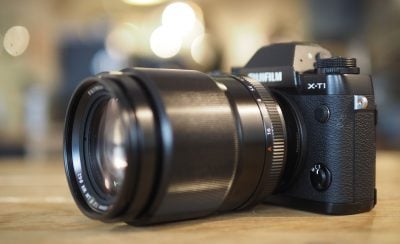Fujifilm XF 90mm f2 review
-
-
Written by Gordon Laing
In depth
The Fujifilm XF 90mm f2 is a bright telephoto prime lens for X-series bodies. Announced in May 2015, it’s the longest prime in the X-series, delivering classic telephoto coverage of 135mm that’s ideal for portraits at a comfortable distance, along with capturing close-range sporting action.
The f2 focal ratio allows you to easily achieve shallow depth-of-field effects at this focal length while the seven-bladed rounded aperture promises well-behaved bokeh as you stop down. A newly-developed quad-linear motor claims fast and quiet autofocus, and like most recent Fujifilm lenses, the XF 90mm f2 is sealed against dust and moisture.
The XF 90mm f2 fills an important gap in the catalogue for those who, like me, prefer to shoot with primes than zooms, and promises to become a natural partner for the XF 56mm f1.2 for anyone who shoots a lot of portraits or chases shallow depth-of-field effects. In my in-depth review I’ll put it through its paces, paying particular attention to the rendering of blurred areas as I believe this will be of utmost importance to potential owners!
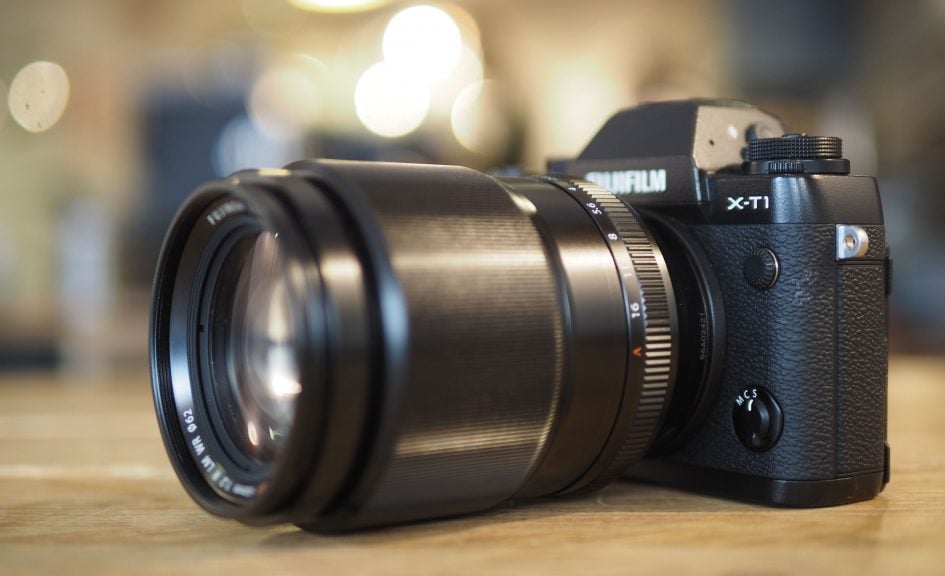
Fujifilm XF 90mm f2 design and build quality
The XF 90mm f2 shares the simple styling of earlier Fujifilm lenses, although the sparse design is more apparent due to its length. At 105mm in length and 75mm in diameter for all but the tapering at the lens mount, the XF 90mm f2 is the largest of the X-series primes to date. It’s noticeably longer than the XF 56mm f1.2 which may share roughly the same diameter and the same 63mm filter thread, but is only two thirds the length at 70mm. Understandably the XF 90mm f2 is heavier too: weighing 540g compared to 405g for the XF 56mm you’ll feel the difference when mounted on a body, but it’s not excessive by any means.
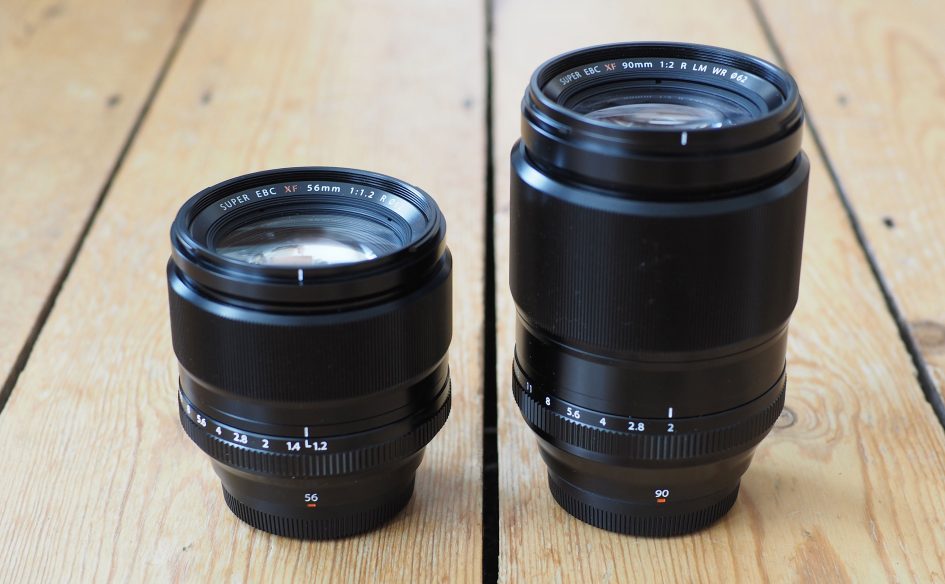
Both lenses are supplied with thick plastic lens hoods which twist onto a bayonet mounting at the end of the barrel. The hood for the 90mm is pretty substantial at 62mm in length, 12mm longer than the hood for the 56mm, which in turn makes the XF 90mm even longer in operation. The size makes it most comfortable when paired with Fujifilm’s larger bodies, like the XT1 and X-Pro, although it’s not too out of place on the XT10. I did however find the XF 90mm plus hood transcended the boundary where people notice camera gear, so street photographers may prefer to shoot with a smaller lens, or consider only using the hood when protection’s required.
In terms of build quality, the XF 90mm feels reassuringly substantial and importantly it includes weather-sealing with a rubber gasket on the mount. Fit it on an XT1 or X-Pro2 and you’ll enjoy a weather-sealed combination, a key advantage over the XF 56mm f1.2, not to mention most other earlier X-series lenses. As a side-note I’m really pleased to see Fujifilm equipping its latest lenses with weather resistance and when I mentioned this to one of their Japanese managers, I was informed it was the plan to implement weather-sealing on all (presumably non-budget) future lenses. It was also suggested there could be new weather-sealed versions of existing lenses in the range.
The XF 90mm f2 barrel employs two rings: a manual aperture dial at the lens mount-end of the barrel with numbered focal ratios from f2 to f16 in 0.3 EV increments followed by A, and a generously wide manual focusing ring towards the front of the barrel. The focusing ring turns freely and doesn’t employ the push-pull operation of some lenses like the XF 16mm f1.4. The focusing ring on the XF 90mm f2 feels very smooth in operation and is nicely damped – the ring on my XF 56mm f1.2 felt a tad looser, but that may be through use. The manual focusing rings on both lenses, like all in the Fuji X-system, are motor-assisted.
In terms of autofocus the XF 90mm f2 features a new Quad-Linear motor system that claims fast focusing which I can certainly confirm in practice. Fitted onto an XT1 running the latest firmware updates, the XF 90mm f2 typically snapped-into focus in less than half second, quietly and confidently. It was interesting to compare it side-by-side with the XF 56mm f1.2 which, while no slouch, focused noticeably more slowly and audibly. Indeed in spontaneous portrait or sporting situations, the quicker AF of the XF 90mm f2 made me turn to it in preference to the XF 56mm, unless the focal length proved too long.
I also tried the XF 90mm and XT1 for continuous autofocus and found the pair delivered a respectable hit-rate so long as you’re using the phase-detect area of the camera and have also updated it to the latest firmware version; I also find Zone AF is the most effective mode for continuous AF on the XT1. In sequences with cyclists or vehicles approaching at speeds of around 30mph, I typically achieved a hit-rate of 75% or higher when using the lens wide-open at f2 and the camera set to Continuous High. Here’s a shot from a sequence of a cyclist approaching which started 16 frames earlier with him quite distant.

Above: Fujifilm XF 90mm f2 (135mm equivalent) at f2 / from continuous burst on XT1
Autofocus speed is an area which Fujifilm has worked hard to improve and with the latest motors in the new lenses driven by updated firmware in the bodies, the X-series has gone from modest to very respectable. I look forward to seeing these improvements in other new lenses for the X system.
Fujifilm XF 90mm f2 optical construction
In terms of optical construction, the XF 90mm f2 employs 11 elements in eight groups with three extra low dispersion elements, and seven rounded aperture blades. The minimum focusing distance is 60cm and like all Fujifilm primes to date, there’s no optical stabilisation – something I missed having at this focal length, particularly when composing handheld.
The XF 90mm f2 delivers an equivalent field of view of 135mm when mounted on an X-series body. This is the classic telephoto length, adored by portrait photographers for delivering flattering perspective and a shallow depth-of-field from a greater distance than, say, an 85mm equivalent lens like the XF 56mm f1.2. I’ll discuss the potential for shallow depth-of-field and blurring effects very soon, but for now here’s a shot with the XF 90mm f2 and XF 56mm f1.2 from the same position to illustrate their coverage.

Above left: XF 90mm coverage (135mm equiv), above right: XF 56mm coverage (84mm equiv)
With a relatively long focal length and short minimum focusing distance, the XF 90mm f2 can perform double-duty as a close-up lens. At the closest focusing distance of 60cm, it can reproduce a subject measuring 112mm across the frame. In comparison, the XF 56mm not only has a shorter focal length, but can’t focus as close either, so at its minimum distance of 70cm, it can only reproduce 244mm across the frame. This is illustrated below where I photographed a ruler with each lens at their closest focusing distance.

Above left: XF 90mm at closest focusing distance, above right: XF 56mm at closest focusing distance
After focal length the next most important specification of a lens is its focal ratio, which in the case of the XF 90mm is f2. This is fairly bright, and I’m pleased to report the quality is excellent across the frame even when wide-open as you’ll see on my results page.
If you’re comparing it to a full-frame system, remember in terms of exposure f2 is the same across all formats, but in terms of depth-of-field, the XF 90mm f2 is more equivalent a 135mm f2.8 on full-frame – this means well-heeled Canon shooters will still enjoy a shallower depth-of-field from the EF 135mm f2 on a full-frame body, but that’s academic as we’re discussing the Fuji X system here. For many people then the question becomes which Fuji prime lens will deliver the shallowest depth-of-field and the best-looking bokeh? This is a contest between the XF 90mm f2 and the XF 56mm f1.2, so I made four different comparisons of macro and portrait subjects to measure their relative performance. In each comparison the XF 90mm f2 is on the left and the XF 56mm f1.2 is on the right.
Before the results though, a quick note on the light-gathering potential of each lens. With an f1.2 focal ratio, the XF 56mm f1.2 is one and a third stops brighter than the XF 90mm f2, allowing it to deploy faster shutter speeds or lower ISOs under the same lighting conditions when both have their apertures wide-open. It’s also important to take into account that while neither lens has optical stabilisation, you can get away with a slower shutter speed when shooting with the XF 56mm f1.2 thanks to its shorter focal length. When you couple this with the brighter aperture, the XF 56mm f1.2 simply becomes a more flexible lens in low light, allowing you to shoot at lower ISOs than the XF 90mm for handheld use.
But now onto the bokeh and depth-of-field comparisons, and again the XF90mm f2 is on the left and the XF 56mm f1.2 is on the right. In each case I adjusted my position so the subject appeared roughly the same size on each image to compensate for the differences in focal length; this inevitably has some impact on the perspective, especially for the closer subjects. Unless otherwise stated, the comparisons show each lens at their maximum apertures.
In the first test I photographed beer bottles on the shelf of Bison Beer, a great craft beer shop in Brighton, UK. The first thing you’ll notice below is the longer focal length of the XF 90mm f2 has rendered subjects in the background larger than on the XF 56mm f1.2. But in terms of blurring, there’s not a great deal in it. The size of the blurred areas is similar as is their styling, although I’d argue the XF 90mm f2 is a little better defined and the XF 56mm f1.2 a little creamier; neither is better than the other in this regard, it’s purely which effect you prefer if any. But either way, a close-call on this first subject.
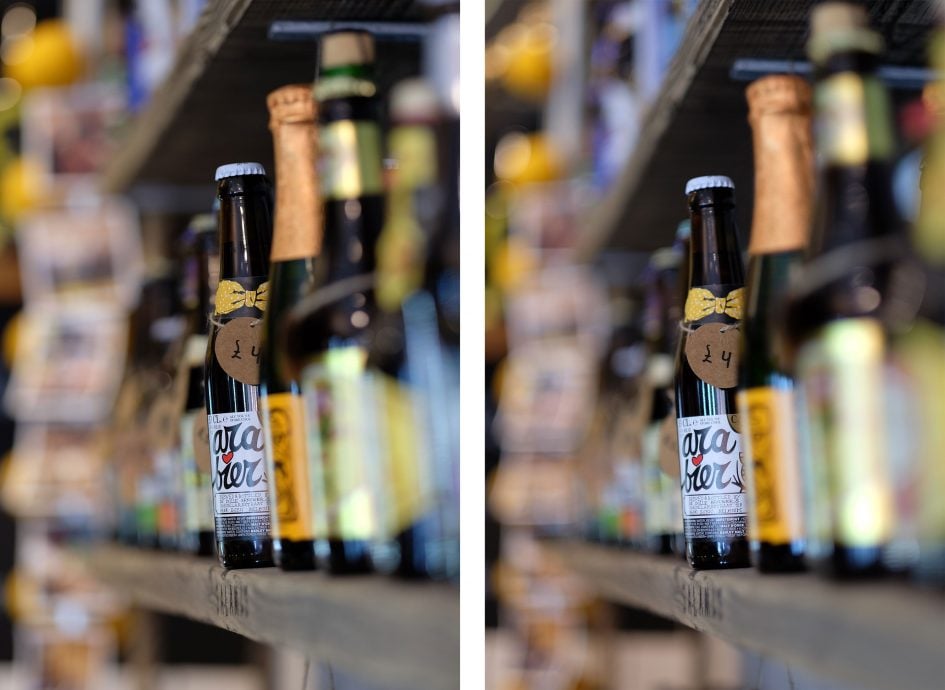
Above left: XF 90mm at f2, above right: XF 56mm at f1.2
Staying in Bison Beer for a little longer, here’s a bonus comparison, although I’ve not been as careful here to match the subject sizes on the frame. Once again though you can clearly see how the longer focal length of the XF 90mm f2 renders subjects in the distance larger, but in this case the XF 56mm f1.2 wins on blurring of the three bottles in the mid-distance, even if you were to retreat a little to better-match the main subject size. The rendering is also again smoother, but this is down to personal preference.
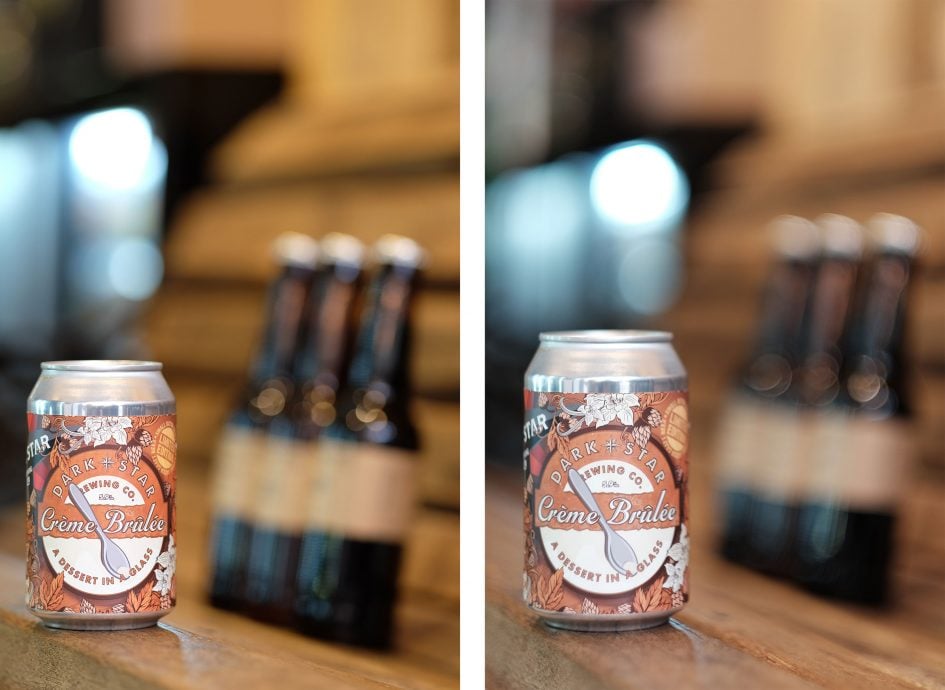
Above left: XF 90mm at f2, above right: XF 56mm at f1.2
Next a portrait shot, and many thanks to Emily for her co-operation here. As before the longer focal length of the XF 90mm f2 has rendered the distant elements larger on the frame which in this instance has made it easier to avoid distracting elements in the background. When shooting with the XF 56mm f1.2 with its broader field-of-view, I was much more aware of all the people walking along this busy street shortly before Christmas, and inevitably more of them made it into the shot. So while both lenses are great for portraits with a similar degree of potential blurring, the XF 90mm f2 made it easier to isolate the subject thanks to a tighter crop of the background behind them. I should also mention the main subject here and in other comparisons was a tad sharper on the XF 90mm than the XF 56mm – it’s an extremely crisp lens.
Another aspect to consider is the subject distance: if you like to stand back from the subject you’ll prefer the XF 90mm, but if you like to be closer then shorter focal lengths allow you to be more intimate or connected. Personally speaking I prefer the 85mm equivalent of the 56mm for this as the 135mm equivalent of the XF 90mm feels a bit disconnected – but again this is purely personal.
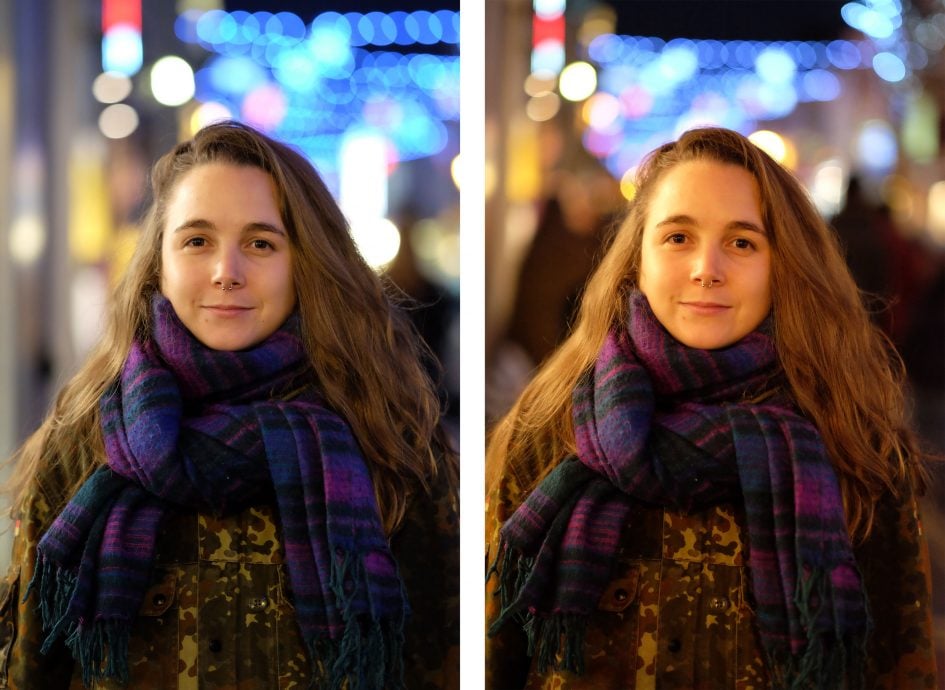
Above left: XF 90mm at f2, above right: XF 56mm at f1.2
My fourth and final bokeh comparison takes a closer look at the rendering of blurred point sources of light – the bokeh balls! To do this I photographed a bush at close range with a Christmas tree in the background. In the side-by-side comparison below you’ll first see how the longer focal length of the XF 90mm f2 is showing fewer bokeh balls than the XF 56mm f1.2, but more obviously there are quite different styles of rendering.
Both lenses render point sources of light as circles in the middle of the frame which become squashed towards the edges. But while the blobs on the XF 90mm f2 below left remain almost circular across the frame, they are squashed much more dramatically into cats eyes by the XF 56mm f1.2 below right. You’ll also notice the blobs on the XF 90mm f2 are more uniform in their brightness, whereas there’s a more defined outline to the blobs on the XF 56mm f1.2. In terms of optics, this makes the XF 90mm f2 better-behaved but again you may prefer the look of one over the other. Bokeh style is a very personal choice.
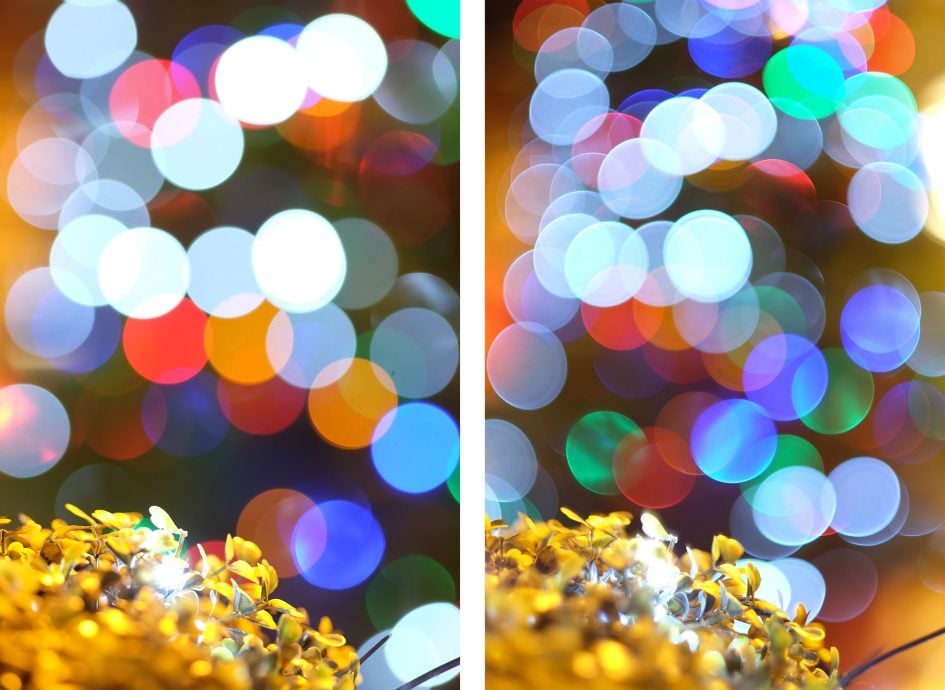
Above left: XF 90mm at f2, above right: XF 56mm at f1.2
So far these four comparisons have been made at the maximum apertures of both lenses, but the rendering and bokeh style changes as the aperture on each is closed-down. At this point the shape of the aperture comes into play and it’s important to compare real-life examples rather than simply basing it on the fact one may have more or better-rounded blades than the other. So here’s that Christmas tree again in a sequence from the maximum aperture down to f5.6.
The XF 56mm f1.2 kicks-off the comparison at f1.2 with the squashed oval / cats-eye effect described earlier, but at f2 the shape becomes much more circular. However you’ll notice the impact of the aperture opening at this point on the blobs which clearly reveal a seven-sided shape. In contrast at f2, the XF 90mm is still wide-open so there’s no influence of its aperture shape on any blobs.
As the aperture on each lens is gradually closed, the impact of their aperture openings becomes more obvious. Both lenses employ seven aperture blades, so both render blurred blobs of light as heptagons. But in each case the blobs on the XF 56mm f1.2 have better-defined outlines and there’s more of them on the frame due to its shorter focal length. But neither of these necessarily make it a better lens. Which style of rendering looks best to you is purely personal – I’m only here to show you the differences in practice!
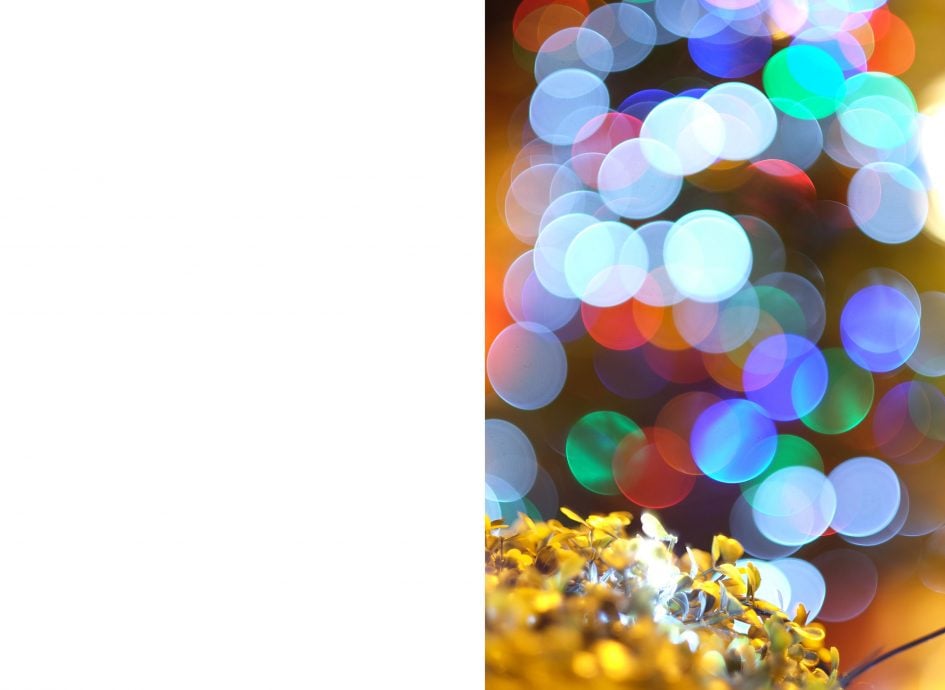
Above right: XF 56mm at f1.2
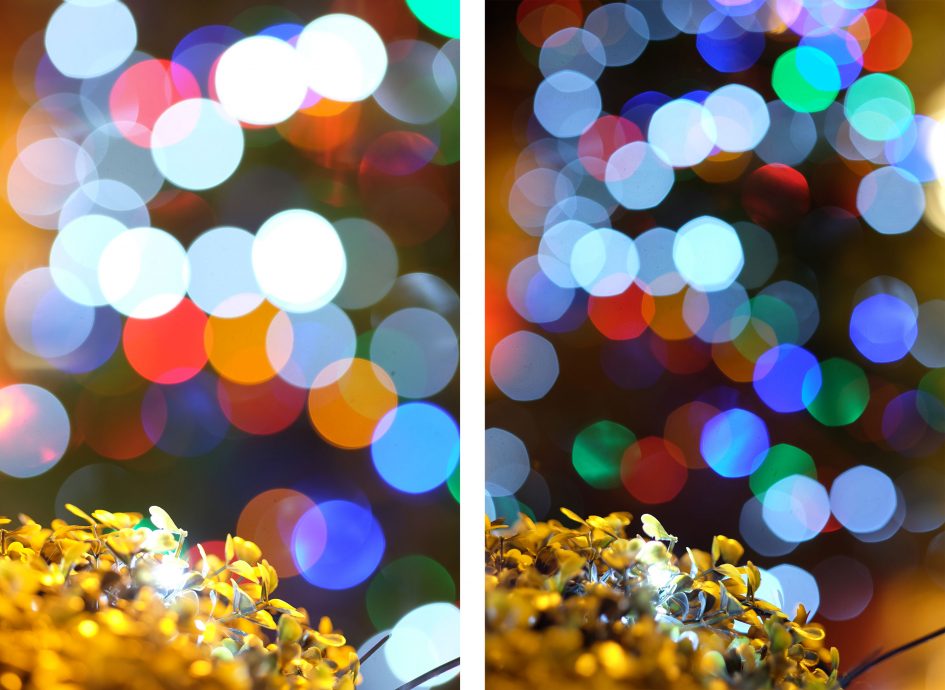
Above left: XF 90mm at f2, above right: XF 56mm at f2
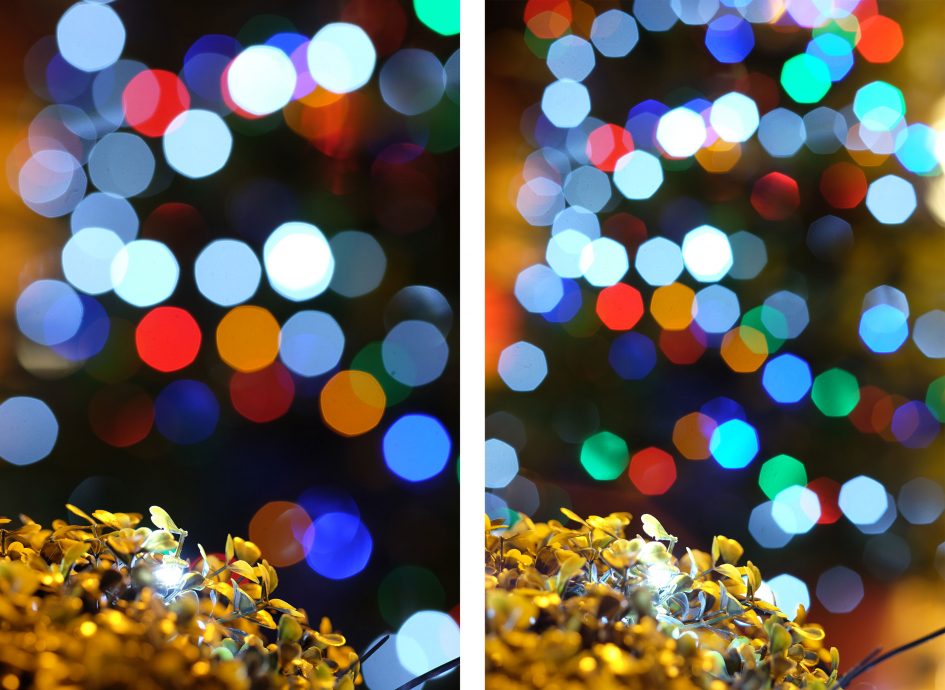
Above left: XF 90mm at f2.8, above right: XF 56mm at f2.8
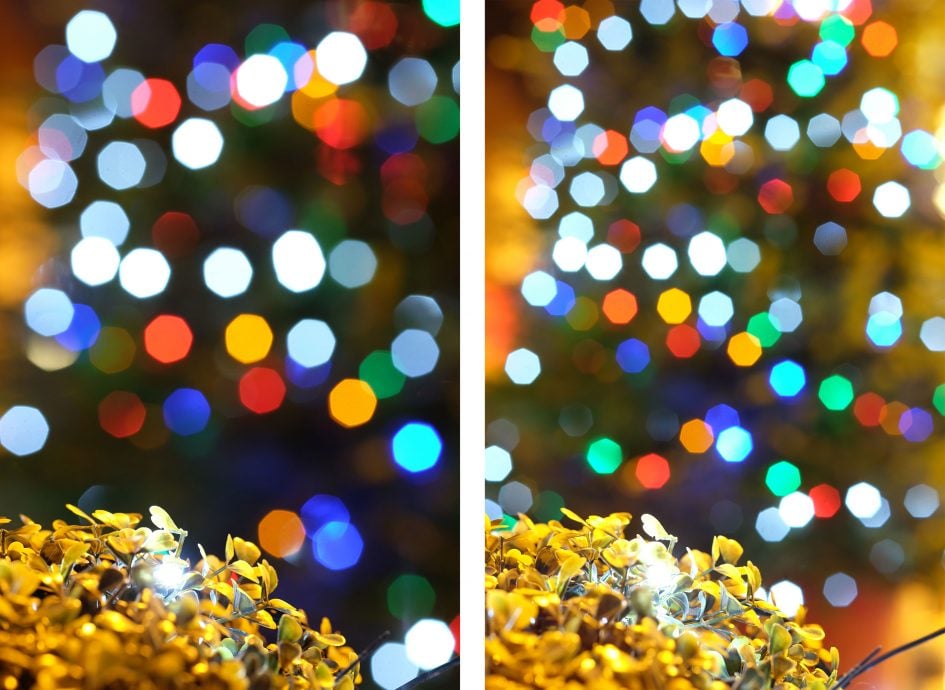
Above left: XF 90mm at f4, above right: XF 56mm at f4
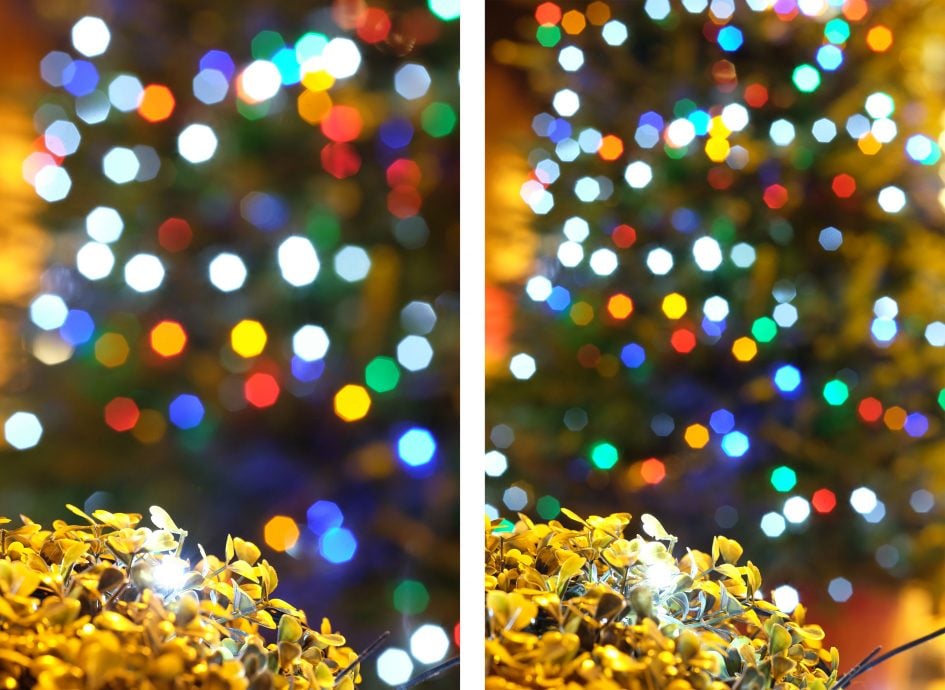
Above left: XF 90mm at f5.6, above right: XF 56mm at f5.6
Before moving on, there’s one other impact of the aperture that’s worth considering. As the opening grows smaller, diffraction causes point sources of light to grow spikes. This is most apparent towards the minimum apertures and can be desirable for city lights at night or even shooting directly at the Sun. To see how the XF 90mm f2 performs in this regard, I shot the following scene on London’s South Bank at night, looking towards the financial ‘Square Mile’.
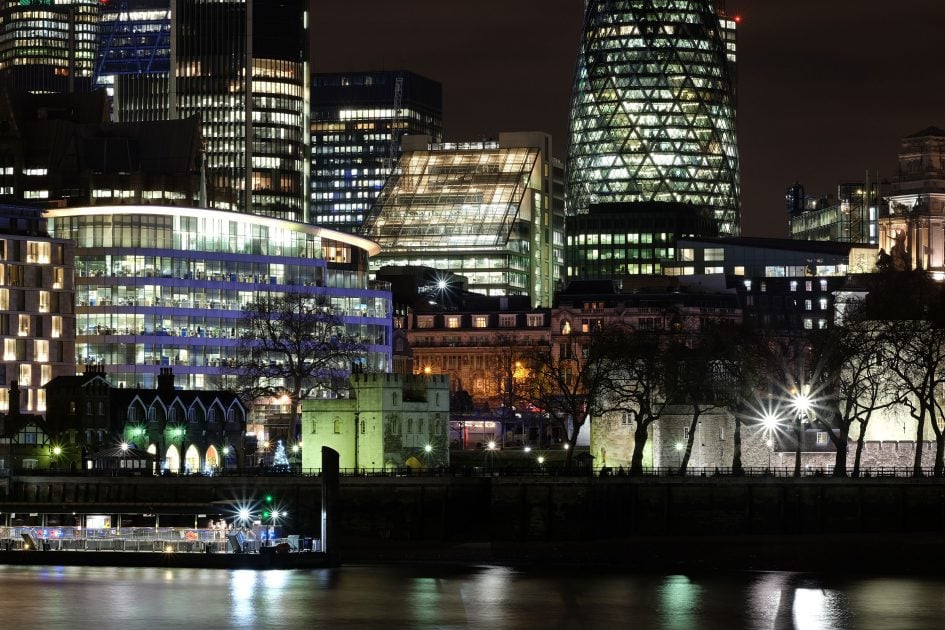
Above: Fujifilm XF 90mm f2 (135mm equivalent) at f11
You can already see the diffraction spike effect on some of the street lamps in the main image above, so lets take a closer look at the largest towards the lower right corner. I took the shot at f11 and f16 to illustrate the difference, below left and right respectively.

Above left: XF 90mm at f11, above right: XF 56mm at f16. 100% crops
As expected, the seven-blade system produces 14 diffraction spikes and the effect is already well-defined by f11. At f16 you can sharpen the spikes further, but the overall image is softened slightly by diffraction, so my preferred combination for spikes is no smaller than f11.
I didn’t get to compare the XF 56mm side-by-side in this regard, but I previously tested its diffraction spikes from the same location in my Fujifilm XF 56mm f1.2 review. In this earlier test the spikes on the XF 56mm f1.2 at the same apertures of f11 and f16 looked a little sharper and better-defined than the XF 90mm, albeit smaller due to the shorter focal length. But I’m still satisfied with the effect from the XF 90mm f2.
Now it’s time to check out how the lens performs in terms of sharpness across the frame! Check out my Fuji XF 90mm f2 sharpness results, or skip to my Fuji XF 90mm f2 sample images or straight to my verdict!




